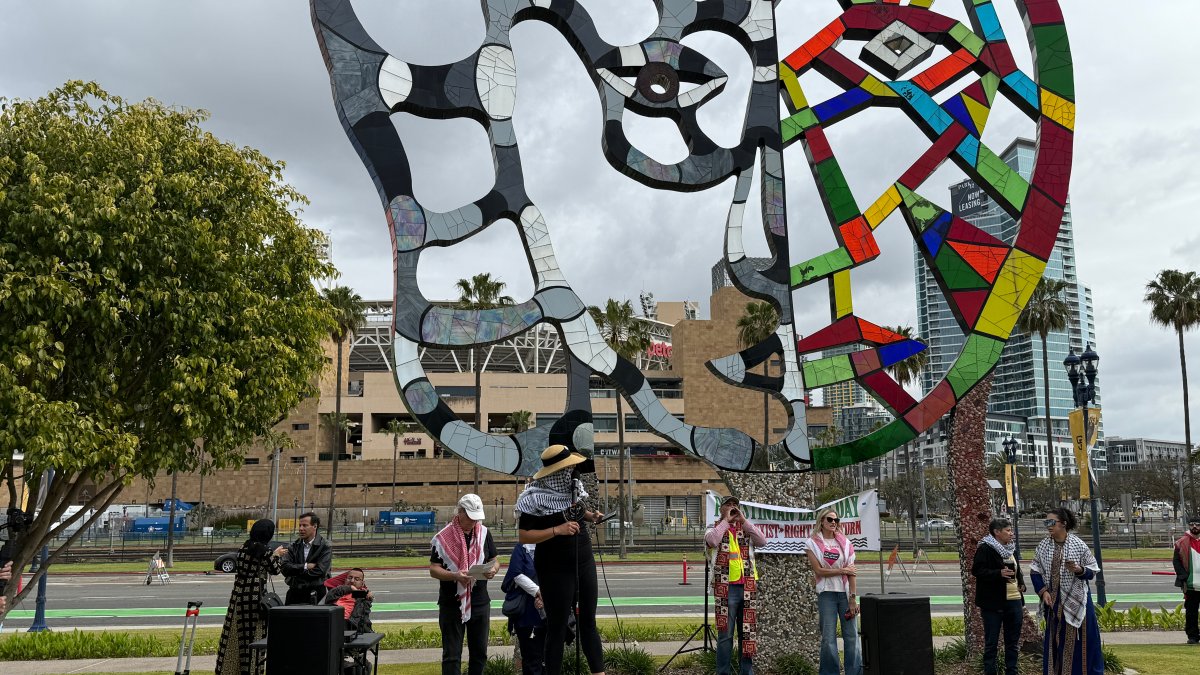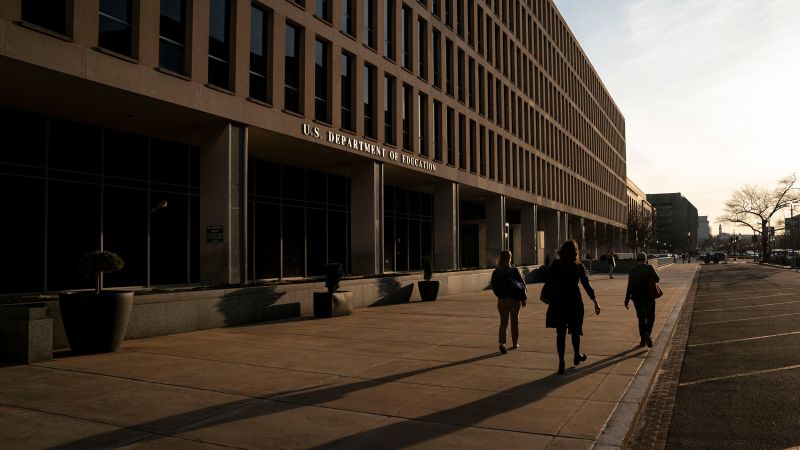San Diego, CA
Man sentenced after molesting a 5-year-old girl at a San Diego church

SAN DIEGO (CNS) – A 73-year-old man who molested a 5-year-old girl at a San Diego church, then left the country, was sentenced today to 25 years in state prison.
Chester Yang pleaded guilty to a count of forcible lewd acts on a child for the April 2017 crime and received additional time for having a prior strike and serious felony prior conviction.
Along with the 2017 case, Yang was convicted in 2001 of committing lewd acts upon a child in San Diego County.
He was also convicted in 1981 for molesting a 6-year-old neighbor and in 1984 for peeping in a locker room at the University of California, Santa Barbara campus, Deputy District Attorney Melissa Diaz said in court.
The prosecutor called Yang’s most recent case “his most brazen” due
to it occurring in public and said it demonstrated “a pattern of escalating
behavior.”
According to the San Diego County District Attorney’s Office, Yang went to Taiwan one day after his family was contacted by police regarding the 2017 case.
In a statement issued shortly after his arraignment in San Diego Superior Court, the DA’s Office said Taiwan would not extradite Yang to San Diego, but with assistance from the U.S. Marshals Service, Taiwanese authorities agreed to alert the U.S. if Yang left the country.
Interpol alerted U.S. authorities in May of last year that Yang had flown to Singapore and he was extradited to San Diego late last year, the DA’s Office said.
The victim from the 2017 case attended Yang’s sentencing hearing and San Diego Police Detective Crystal Duerr read a statement written by the girl.
“When a kid walks into a church so their parent can practice for Mass, should they have to worry about their safety? No, the answer is no, and they definitely shouldn’t have to wonder for five years if the bad guy will ever get caught,” the victim wrote. “Lucky for me, after all those years, you are finally where you are supposed to be, in jail.”

San Diego, CA
Newsom wanted encampments off state land. Fires by San Diego highways show there’s a long way to go.

The woman woke up feeling hot. That’s how she discovered her hair was on fire.
The 47-year-old slapped at her head and scrambled from her tent, which sat beneath a bridge in southern San Diego, she recalled Wednesday during an interview at the site. Her Yorkshire terrier made it out, too. But the insulin she uses for her diabetes was lost.
“It went up fast,” said the woman, who spoke on the condition that only her middle name, La, be published. “I’m now scared to sleep.”
Fire department records show that the blaze at La’s tent began before sunrise on March 21. Two days later, a tree ignited near a different San Diego campsite. Both locations appear to be on land overseen by the California Department of Transportation, and the fires highlight the difficulties of keeping Caltrans property free of encampments when there are few places for homeless people to go.
Last summer, Gov. Gavin Newsom issued an executive order demanding that agencies quickly clear tent camps on state land. “It’s time to move with urgency,” Newsom said in a video. “There are no longer any excuses.” Yet in some cases there now seem to be more tents near San Diego’s highway on- and off-ramps, which are generally managed by Caltrans. Advocates for homeless people have pointed out that this shift happened after local governments passed camping bans that boosted penalties for sleeping on city sidewalks.
Rachel Laing, a spokesperson for Mayor Todd Gloria, estimated that since the start of last year more than 60 local fires had begun by encampments next to roadways. That total went up dramatically if you looked at all blazes within 100 feet of streets monitored by Caltrans, Laing wrote in an email, citing information from the fire marshal. (Fire department data previously shared with The San Diego Union-Tribune do note a number of incidents near highways, although records available to the public do not always specify the exact origin point.)
San Diego is negotiating with the state about potentially giving city crews more authority to clear encampments on California property. A sticking point may be who pays for what as collecting debris can be expensive. The city of San Diego needed a helicopter on Thursday to remove several tons of material from one abandoned encampment in La Jolla.
The state has given the region millions of dollars to aid homeless people and public data show that Caltrans has boosted sweeps in recent years. In 2024, the agency removed 943 encampments and about 4,600 cubic yards of debris from around San Diego, according to spokesperson Aaron Hunter.
But homelessness countywide continues to grow and there are nowhere near enough beds for everybody asking, despite ongoing efforts to launch additional shelters. And in a tough budget year — California faces a large deficit — it’s not clear whether Caltrans will get significantly more resources to monitor state land.
“Caltrans is responsible for protecting and maintaining the state’s highway network and regularly assesses potential safety and infrastructure threats on all of its state right of way properties, including fires,” the agency said in an emailed statement from Hunter. Caltrans didn’t yet have a record of blazes at the two San Diego sites that burned in March, although Hunter wrote that those locations had been “addressed nine times since 2022 and are scheduled to be cleaned again.”
The March 23 fire began around 3:30 a.m. on a steep hill overlooking Interstate 5, according to a fire department incident report obtained through a records request. Firefighters were able to put out the blaze in about 20 minutes before any houses were damaged.
Part of the hillside was still black when a reporter visited the area Wednesday. A pile of burned wood sat at the base of a pepper tree, its bark charred and ashy, and nobody was inside a nearby structure made out of tarp. Caltrans’ online map shows most of that land falling under the agency’s jurisdiction.
The same goes for the blackened plot where La’s tent burned earlier in the month. Several people appeared to still be sleeping at the site, including La, who wore a wrap around her head. She and a friend believe the fire may have been intentionally started by another person living outside, although suspicions were hard to prove.
La said outreach workers and police did come by, yet shelter was scarce. “Most of the time they don’t have a bed — not on the female side.” La added that she was on a list for housing.
Her friend, Thadius Wright, 64, said he does have a unit downtown, but was in the area to check on people he’d gotten to know during the years he slept at the site. Even though cleaning crews periodically moved the group out, the overpass offered too much protection from rain to fully abandon, Wright noted. “There’s nothing like being out here in the wintertime and being wet.”
Wright was convinced that most people would happily trade their tents for housing — if it was affordable. “They think we want to stay out here,” he said about frustrated neighbors. “Not true.”
Originally Published:
San Diego, CA
San Diego activists gather to recognize Palestine Land Day

Sunday marked the beginning of Eid, where people of the Muslim faith break their fast and celebrate the close of Ramadan. On the lawn outside the San Diego Convention Center, local activist organizations also marked Land Day — a symbol of resistance and land rights for the Palestinian people.
“It’s also a time of mourning, it’s also a time of where people should stand up and get together,” said Aisha Noor with the San Diego Grassroots for Palestine.
On March 30, 1976, the Israeli government moved to seize roughly 21,000 acres of Palestinian land. Israeli forces killed six Palestinians in response to protests. Now in 2025, a delicate ceasefire between Israel and Hamas has been upended.
“What it comes down to is no child should be killed. It doesn’t matter if it’s in Palestine, in Congo, here in the United States,” said Noor.
Since October 7, 2023, the Palestinian Health Ministry said more than 50,000 people have been killed in Gaza, including more than 15,600 children. That’s why organizers like Noor said they want to make sure the conflict happening in the Middle East isn’t falling on deaf ears in San Diego.
Rallygoers marched through the streets of downtown and headed toward Seaport Village, voicing their support for Palestine.
“I have seen a lot of changes, people are afraid to speak up,” said Noor. “A lot of people are staying home now. They’re not getting involved as much.”
The United Nations said nearly all of Gaza’s population — more than two million people — has been displaced from their homes since the war with Israel began.
San Diego, CA
Cup of Chisme: How the Camping Ban Is Working

It has been two years since San Diego’s camping ban went into effect.
We wanted to know how it’s going.
A lot of attention on parks: Our Lisa Halverstadt crunched the data and discovered that city parks, especially Balboa Park, have seen the most enforcement. Her analysis shows that two-thirds of the 260 camping ban citations and arrests happened in city park and 40 percent were in Balboa Park.
Refresher: The city of San Diego’s camping law bans camping when shelter is available and at all times, regardless of shelter availability, near sensitive areas such as schools and transit hubs. Since the city approved the ban, other cities across the city have followed suit.
Halverstadt found that while Balboa Park stakeholders say they still face challenges with the homeless population at the park, they have seen an improvement. Meanwhile, service providers continue to raise concerns about the law simply pushing people to hard-to-reach and dangerous spaces to avoid law enforcement.
You can read the full story here.
What do you want to know about the camping ban? Send me a note at andrea.lopez@voiceofsandiego.org.
Scoop: Hospital Borrowing Blues
This week, our Tigist Layne got her hands on a big scoop.
She was the first to report that Sharp HealthCare threatened to sue Palomar Health, a public health care system, for allegedly breaching an exclusivity arrangement the two systems established in 2024.
Let me back up: As we’ve reported, Palomar Health is struggling financially. (Sidenote: Palomar Health fought our reporting for a while, but now openly admit they have “declining financial circumstances.”)
Last year, Palomar Health got a $25 million from Sharp HealthCare. They also entered into an agreement to collaborate.
Here’s how they described it at the time in a press release: “Sharp will expand its network into North County, including primary care and medical specialties as appropriate for the communities. Palomar’s patients will also have access to Sharp’s specialized and higher-acuity services not currently available at Palomar Health, including transplants, advanced oncology procedures and more.”
Borrowing beef: As the Union-Tribune reported earlier this month, UC San Diego also loaned Palomar Health $20 million. That rubbed Sharp HealthCare the wrong way.
Layne reports that Sharp officials sent a letter to Palomar’s CEO concerning the loan agreement and exclusivity arrangement Sharp and Palomar entered into last year. Now, Sharp HealthCare wants their money back, plus interest.
Palomar Health officials denied Sharp’s allegations. They sent us a copy of their response.
We’ll keep watching: What does this all mean for Palomar Health? Will the health care systems work it out? How could this impact patients? If you have questions or tips, reach out to Tigist.layne@voiceofsandiego.org.
Read the full story here.
Women Leading the Conversation

Thank you to all our members and guests who joined us last week for a conversation with some of San Diego’s most influential women leaders. So many of you are Cup of Chisme readers and I love it!
Our speakers included U.S. Rep. Sara Jacobs, San Diego Symphony CEO Martha Gilmer and Ebony Shelton, chief administrative officer at the county of San Diego. We had a fascinating discussion about their challenges as leaders and goals for the institutions they lead.
Here’s our event photo gallery. Hope to see you at our next event!
More Chisme to Start Your Week
- Lisa Halverstadt revealed this week that the city of San Diego is on the hook for monthly payments of $77,000 for a shuttered homeless shelter.
- For this month’s Progress Report, Jakob McWhinney profiles the Santee School District. It is one of 100 school district across the nation performing better than before the pandemic. Read the story here.
-

 News1 week ago
News1 week agoHow a Major Democratic Law Firm Ended Up Bowing to Trump
-

 Education1 week ago
Education1 week agoICE Tells a Cornell Student Activist to Turn Himself In
-

 News1 week ago
News1 week agoDismantling the Department of Education will strip resources from disabled children, parents and advocates say | CNN
-

 News6 days ago
News6 days agoWashington Bends to RFK Jr.’s ‘MAHA’ Agenda on Measles, Baby Formula and French Fries
-

 News5 days ago
News5 days agoTrump Is Trying to Gain More Power Over Elections. Is His Effort Legal?
-

 Politics1 week ago
Politics1 week agoEXCLUSIVE: Groundbreaking new prayer book designed for demographic most targeted for abortion
-

 Movie Reviews1 week ago
Movie Reviews1 week agoFilm Review: Rachel Zegler is the Best Part of an Otherwise Dull Remake of ‘Snow White’ – Awards Radar
-

 News1 week ago
News1 week agoShooting at Park in New Mexico Leaves at At Least 3 Dead and 16 Injured

















